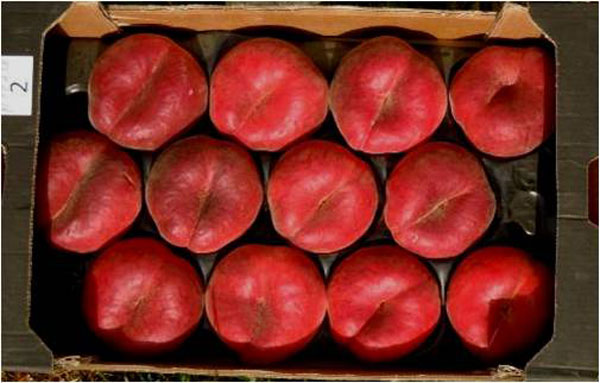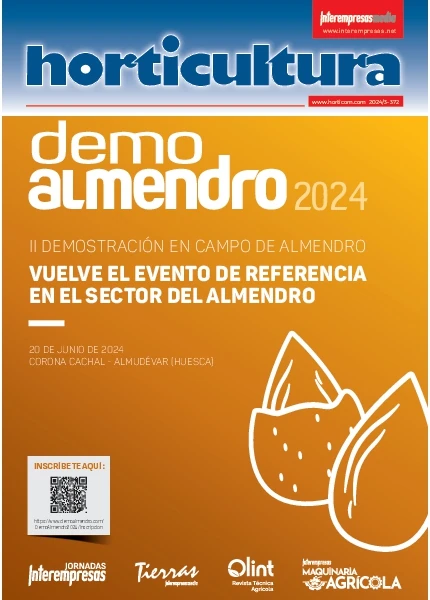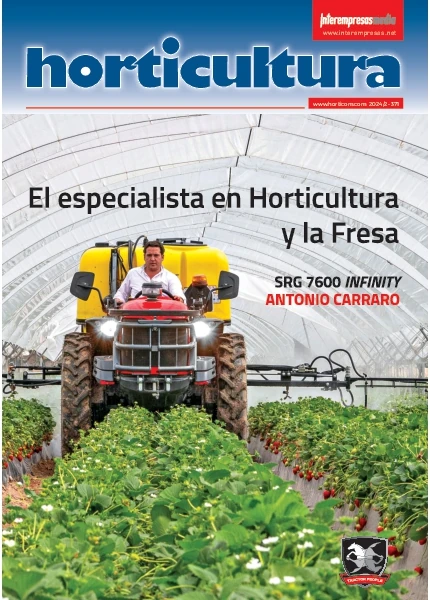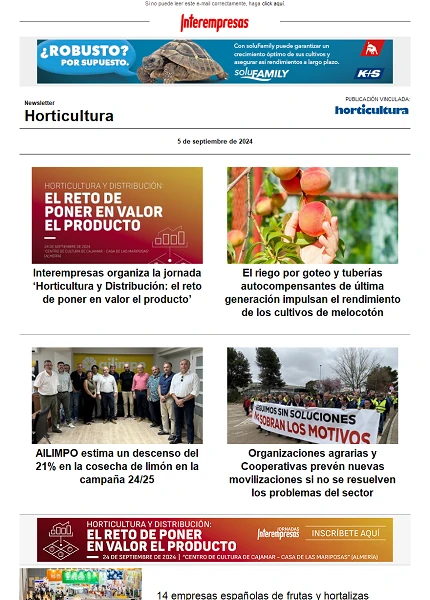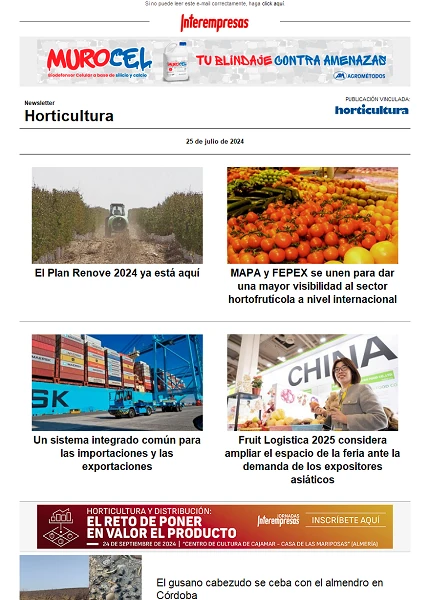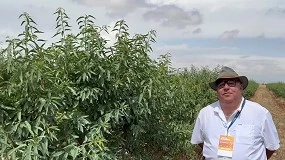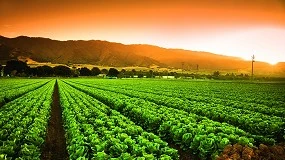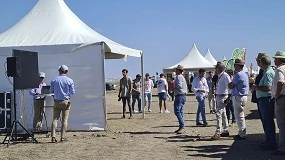More than a thousand of professionals attend to the XVII Day Frutícola of the IRTA
16 November 2011
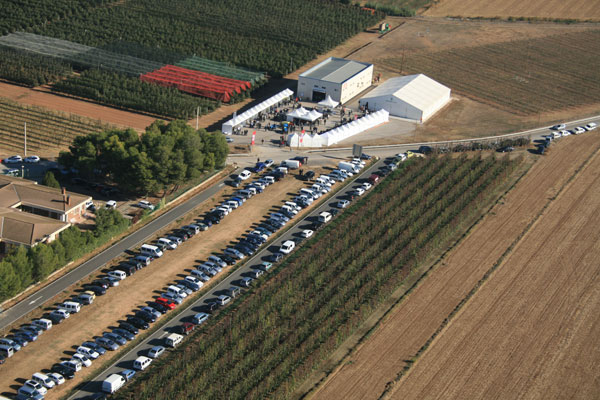
The program of the day, that carried out the days 26 and 27 October, included different technical reports and visits to essays of field. Besides, it had the presence of 22 expositores of companies linked to the sector, like viveros, societies of phytosanitary and fertilizantes, supply of material of fertirrigación, machinery of poda and recolección, etc. A day before, the past 25 October celebrated a similar day in the IRTA-Experimental Station But Badia, that registered a remarkable influx and where in addition to the exhibition of varieties tackled different reports on technology of production.
The XVII Day Frutícola of the
Increase the ‘russeting' in pear Conference, to give him greater value added
After the words of welcome, initiated the report of the doctor Luis Asín, specialist of the IRTA, that versó on how increase the ‘russeting' in pear Conference produced in determinate warm zones of the Valley of the Ebro, since of the same depends in good part the value of this variety. In the first place, it pretends achieve a condition of ‘russeting' sufficient from a commercial point of view, and second, reduce or minimise the possible losses of production associated to some of the treatments inductores of ‘russeting that have showed said inconvenient'.
Until it remained out of register the use of the hydroxide cúprico and the oxide cuproso after the flowering, these were the most employed products in the plantations of pear Conference, whose problem was the greater or lower loss of production according to dose and moment of application. In the actuality there is four possible alternative to which was the standard application postfloral. The first consists in the application of hydroxide cúprico or oxide cuproso before the flowering, although his employment would suppose not fulfilling any of the recommendations of use of said products. The second alternative is the employment of products or mixes (for example Talosint or Auxym + TMTD + Dodina) whose efficiency is lower to the registered with the employment of hydroxide cúprico or oxide cuproso in postfloración, but whose suitable employment would induce to avoid loss of production. The third option is the employment of microaspersores for humectar the fruit, although this last depends too much of the nocturnal meteorological conditions, by what would advise in those unaffected plots by the wind, so that it can ensure a humectación prolonged. Finally, the fourth alternative is the employment of products that contain copper in his formulation and whose use is allowed in the vegetative period, as Welgro Cu+Zn, whose behaviour is seemed to the of the hydroxide or oxide cuproso, as long as the applications do in the moment of maximum sensitivity of the fruit.
Along the report deepened in the recommendations of use for each one of the alternatives, with the aim of maximizar the ‘russeting' and/or reduce the irrigation of purge associated to the employment of some of the products studied. Said recommendations base in choosing properly the state fenológico and/or the meteorological conditions in the moment of application, the number of applications and the doses to employ, in function of each one of the alternatives posed.
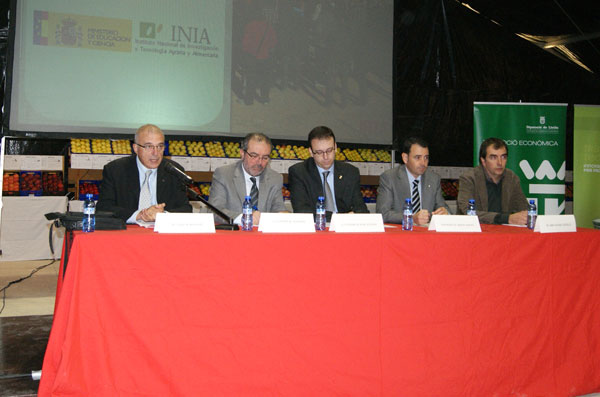
Conclusions of the essays with meshes antigranizo <#comment>versus Consumption of water
Later, the doctor Joan Girona, responsible of Efficient Use of the Water of the IRTA, exposed the results of different essays about the use of the meshes antigranizo for the protection antigranizo, and refractory carpets, as well as the consistent effect of the intercepción of radiation and the modification of the temperature and the environmental humidity in the consumption of water in peach. The quantity of water that potentially can consume the plant of melocotonero sees affected by the radiation or intensity of light that this receives or intercepts and this radiation diminishes by the effect of the meshes antigranizo that reduce the solar radiation, reducing the consumption or the demand of water. Like result more important of the essay realised/realized in the year 2007, after using meshes of black colour/color with a reduction of the radiation of 18%, fits to stand out that the quantity of necessary water to keep the same state hídrico in the plots covered with meshes antigranizo was 27% inferior to which required the plots witness, during the time of exhibition of the meshes, of 25 June to 16 August.
This reduction of the consumption of water hardly had incidence in the commercial production and in his quality, observing so alone a delay in the maduration of the fruits under mesh. /p>
To continuation, the doctor Terence Robinson, of the ‘Department of Horticulture of New York State Agricultural Experiment Station', Cornell University, pronounced an interesting report titled ‘current Tendencies in the production of apple in United States'. A country in which the state of Washington is the main producer (58% of the total), gone on down New York (13%) and Michigan (9%). The most important change of the sector of the apple has been the progressive renewal varietal that has derived in that the varieties of the group Network Delicious have lost progressively importance in favour of others like Gala, Jonagold or Fuji between others; beside different varieties developed in shape of club like Jazz, Cameo, Pink Lady, Honey Crisp or Sweet Tango, between others. The available price of these last in bushel is from among two and thrice upper to the of the traditional varieties.
The second change to stand out produced around the middle of the decade of 1970, when they entered the intensive plantations with the use of the central axis type ‘Solaxe'. These based in plantations of low trees, where all the operations of handle could realizar from the floor but the height of the trees was too low to achieve a high intercepción of the light (only around 50%). In consequence, the performances were minors that in trees of greater height. The central axis type ‘Solaxe' based in half intensities and half distances of plantation of around 1,2 metres between trees and 4 metres between lines. The structure of the tree consisted in several branches (of 8 to 10) permanent sides in position pendular. The productions obtained were not the optimum and the handle of the glass and of the branches of fructificación (complex branch with ramifications or type trumpet) was too complex, as also the adjust of the load of the tree. So that the intercepción of the light was optimum (70-75%), the proportion of the height of the tree and the distance between rows has to be of 0,9. In this case, the optimum relation, with a distance between typical rows would have to be of 3,0 to 3,5 metres; whereas the height of the trees adults would have to oscillate of 2,7 to 3,2 metres.
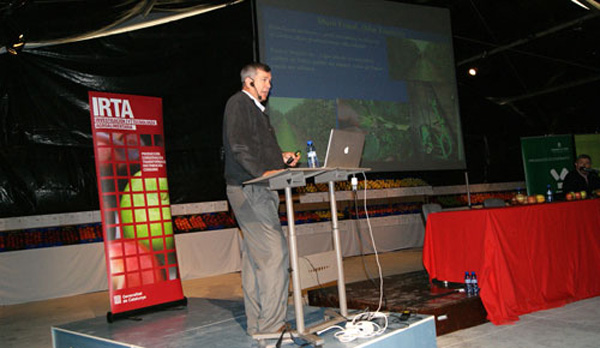
At the beginning of the 80 initiated the evaluation of the systems multi row. These systems attain an intercepción of light and high performance, but have not used because the colour of the fruit reduces in the centre of the rows and the control of bad grasses is difficult. In the decade of the 90, began to contrive a system of handle for an optimum economic density (3.000 trees/hectare) that initially called ‘Tall Spindle', based in high trees, high density of plantation, use of plant preformada and minimum interventions of poda during the first years of the plantation. It bases in a central axis narrower and of greater height that the ‘Solaxe'. This system employs the concept of a lot of anticipated (10-15) with a density of plantation (2.500-3.300 trees/hectare) what involves a distance between trees of 0,9-1,2 metres and between rows of 3,0-3,5 metres. The relation width/height is of 1-0,9 and the height of the tree of around 3 metres.
In concrete, splits of tree preformado in nursery with multiple lateral branches no very long that arch if this was precise. From the fifth year, the 15 to 20 branches of fructificación small and inserted in the central axis will renew periodically when they surpass the 2 centimetres of diameter, by what any will be permanent. This avoids to have of permanent branches too vigorosas and keep the vigour of the tree. When increasing the density of plantation, the entrance in production is faster that the ‘Solaxe' with the aim that to the fifth year reach a production accumulated of 150 tonnes/hectare, with what the plantation amortises between the chamber and fifth year, in function of the variety. The vegetative system is narrower that in the ‘Solaxe' and simpler, as in the ‘Super Spindle'. It observes besides, branches of type pendular, as in the ‘Solaxe', to end to induce the fructificación and reduce the vigour of the branch, but in contrast, practises the poda of renewal, as in the vertical axis, when the diameter of the branch and his length exceeds the strict limits. One of the keys of the system is to avoid the presence of strong branches situated in high position that, by his size, can shade the inferior parts.
The recolección in the high parts effects with ladders whereas for the poda employ platforms automotrices in some plantations, what allows to improve the efficiency of the hand of work. Other systems of plantation, like the ‘Trellis' use in different states, for example in Washington, but the cost of the structure of support and his back execution are too complex. In consequence, the central axis, with his diverse modalities, is the most employed system.
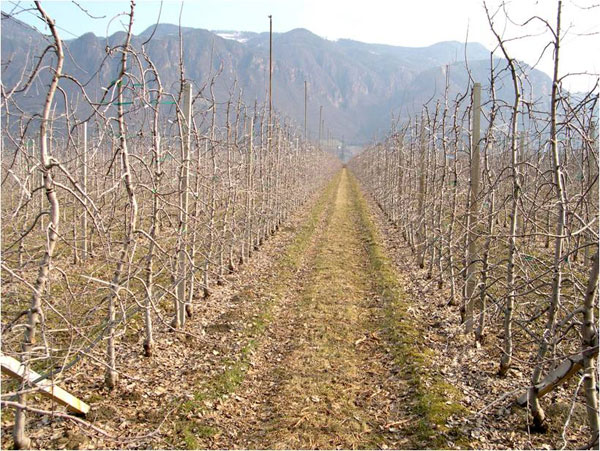
The ‘plagues of quarantine', another of the subjects tackled
During the session, in the afternoon, Miquel Àngel Soler, of the Department of Agriculture (DAAM) of the Government of Catalonia, exposed in his report ‘Sharka, Xanthomonas and fire bacteriano: a danger for the sector frutícola', the main appearances related with these designated ‘plagues of quarantine' that suppose a big risk for the productions frutícolas of the main cultured species in Spain, like the melocotonero and the peral. In fact, the fire bacteriano in the actuality finds present in regions like The Rioja, Navarra, Aragon and Extremadura. These harmful organisms have like main characteristics that are of easy dispersion, difficult control and besides, can cause economic damages very important in the plantations frutales. The most effective way to struggle against these harmful organisms of quarantine, since the big majority do not have effective chemical treatments, is the fast detection of possible focus and his eradication, consistent in the application of phytosanitary ware measures to delete a plague of a zone (Law 43/2002, of 20 November, of vegetal health), almost always by means of the destruction and incineration of the plants or the plantations affected.
Of all the bacteria fitopatógenas that affect to the frutales of seed (peral, manzano, membrillero, etc.), the most important is, definitely, the Erwinia amylovora, causante of the illness known like ‘fire bacteriano' of the rosáceas; said like this by the characteristics of his symptoms and of his effects on the plants and the production.
The Plum pox virus (PPV) is the causal agent of the Sharka or smallpox of the ciruelo. It is the illness viral more important that affects to the frutales of bone. The illness comes from of the east Europe, being described for the first time in the year 1917 in ciruelo European and in the year 1933 in albaricoquero in Bulgaria (Atanasoff, 1932, 1935). This, has extended from Europe to the producing zones of frutales of bone more important, because of the traffic of vegetal material infected and the easy transmission by injerto. In Spain detected for the first time in the year 1984. In the actuality, is present in 47 countries of all the world.
The causal agent of the stain bacteriana of frutales of bone is the bacterium Xanthomonas arboricola pv. pruni. Identified, for the first time, in United States in the year 1903. At present, this agent is present in numerous countries of the world and in Europe considers established in Italy, Slovenia, Bulgaria, France, Romania and Russia. It treats of a bacterium that can cause grave damages to all the frutales of bone (Prunus spp.), so much in leaf as in fruit. In Spain detected , for the first time, in ciruelo in the year 2002.Like final reminder recommends to the fruticultores that in the new plantations use material pertinent vegetable of viveros authorised/authorized, with the corresponding phytosanitary passport and pertinent of free zones of illnesses. Besides, it is necessary to watch the plantations and in case that detect a plant with suspicious symptoms of any one of these illnesses, is necessary that warn quickly to the Services of Vegetal Health of the Departments of Agriculture of the Autonomous Communities./p>
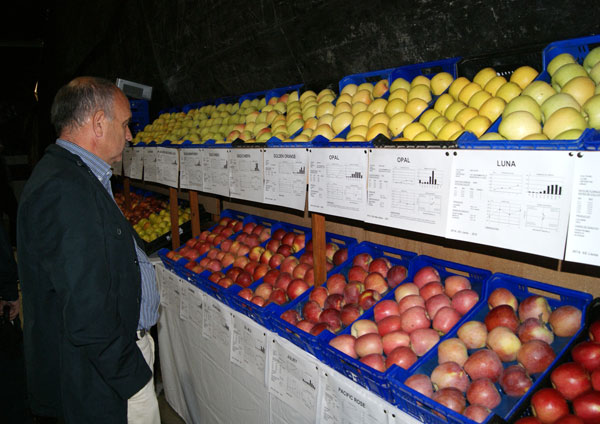
In addition to the technical reports, the present public could stroll, observe and inform about the varieties frutícolas exposed.
“An election varietal correct guarantees the profitability of the exploitations”
Finally, the doctor Ignasi Churches, manager of the program of evaluation of new varieties and patterns of the IRTA, realizar as it is usual the exhibition commented of new varieties of apple, pear and peach, that woke up, again, the interest of the present public. The correct election varietal is, more than ever, a key factor for the profitability of the exploitations, by the high cost that supposes and by his effect in the available price of the fruit. It is thus that the IRTA has implemented during this year the service ‘Inno-Var' to advise, of personalised form, to the producers about a correct election varietal. Churches took advantage of the occasion to stand out that the climatic conditions have been atypical, during the year in course, with high temperatures in the month of April, abnormally low in July and extremely high and with scarce pluviometry in August and September.
Regarding the varieties of apple, the expert of the IRTA did reference to the new generation of varieties of the group Gala like Gala Venus, Gala Decarli, Banning Gala (all of colour semi grooved) and Galaval (smooth colour) that contribute an increase of the colouring regarding the ones of reference Brookfield Gala or Buckeye Gala and in the case of Jugala, a greater precocity in the recolección. In any case, remembered that his behaviour will have to contrast in back years with trees of greater age. Churches also detained in the group of resistant varieties to the moteado and that contribute a quality gustativa every time greater like Ariane, Modí and the ones of obtaining more recent like Gemini, Gaia, Fujion and Smeralda (CIV-Italy), or the pertinent of the INRA-Navadi Story (Inored), between others. Another important group of varieties, according to the expert of the IRTA, are the ones of the group Golden Similes pertinent of cruzamiento with Golden and generally of epidermis yellow and greater firmness that Golden. In others, resaltó the following: Golden Treat, Malley Green, Opal, Golchief and Moon. Inside the group Golden, Golden Reinders and Golden Crielaard still are the varieties of reference whereas in the group Fuji are it Kiku Fubrax (grooved colour) and Zhen Aztec Fuji (smooth colour). Even so, numerous varieties, no mentioned, find in phase of evaluation to contrast his behaviour in the next years. Between them, it fits to stand out the ones of red pulp.
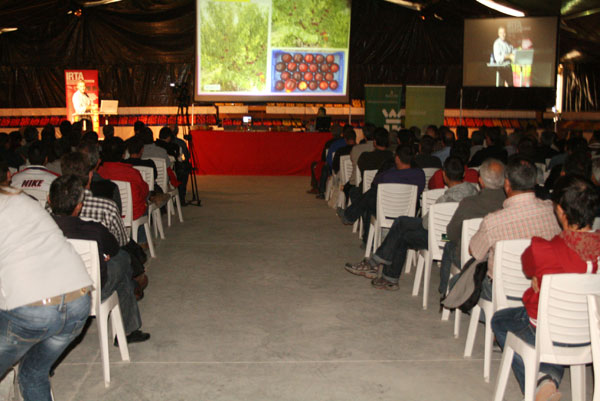
In the case of the pear, the creation varietal also is remarkable. Although the new varieties obtained are numerous and contribute a good behaviour/behavior and quality, his positioning and development to scale commercial is difficult. Thus, very few of the new varieties have reached the commercial circuits. Of the varieties evaluated in the IRTA, in the last years, only Carmen of recolección precocious has planted , to scale commercial, in the zone of Lleida. Two weeks before that Conference and with characteristics very similar regarding behaviour/behavior agronómico, presentation of the fruits and quality fits to quote the variety Corina, pertinent of Belgium and developed in shape of club. Of recolección at the beginning of September, Elliot is the variety of pear that offers the best behaviour/behavior and quality gustativa, having realised/realized the first plantations in the year 2010. To finals of September recolecta Angelys, the only variety that has developed in shape of club in the commercial circuits of the country./p>
In melocotonero/nectarine the innovation varietal is very important, especially in the case of the nectarine and of the Paraguayan. Near of 300 varieties are being evaluated in the Experimental Stations of the IRTA of Lleida and of But Badia (Gironinginga). The information about his behaviour transfers to the producing sector in the days that annually realizar in the months of July and October. In the presentation remembered , in the first place, that the innovation varietal has had like aim prioritario the high colouring and the good calibrate of the fruit, as well as the sweet flavour of the pulp. In spite of the effort that the producing sector has realizar by the renewal varietal, the consumption of peach in Spain finds stagnated from does years and does not reach the 5 per capita kilos and year. It is thus that offer a product of constant quality, recolectado in the suitable state of maturity (no only by colour and calibrate), and indicating the typology or flavour to the consumer (sweet / no sweet) is essential to recover the consumption.
In the report exposed the behaviour of the most remarkable varieties of the main groups varietales. In nectarine of yellow meat has of the range varietal wider that covers from principles of June until finals of September. In this group, the varieties evaluated proceed mainly of I.P.S. (Zaiger), To.S.F. (To. And L. Courierslard) , P.S.B. (P. Buffat), Provedo and of the C.R.To. (Italy). In the group of the varieties of sweet flavour, the reference keeps on being Big Top to which have added others like Nectaprima, Big Bang, Noracila, Carene, Gardeta, Honey Blaze, Extremered, Nectareine, Luciana, Honey Royal, Honey Glo, Nectavantop, Nectagala, Honey Cascade, Tarderina and Nectadiva, between others. Also in the group of varieties of white meat the innovation has been important regarding the colouring of the fruit, low sensitivity to the cracking and sweet flavour. In this line, stood out , between others, the following varieties of recolección during the period that covers of mediated of June around the middle of September: Nectaeraly, Turquoise, Nectaboom, Cristal, Garcica, Nectarlove, Nectaperle, Nectardream, Nectarrruby, Tourmaline, Nectarabondant and ASF 08-32.
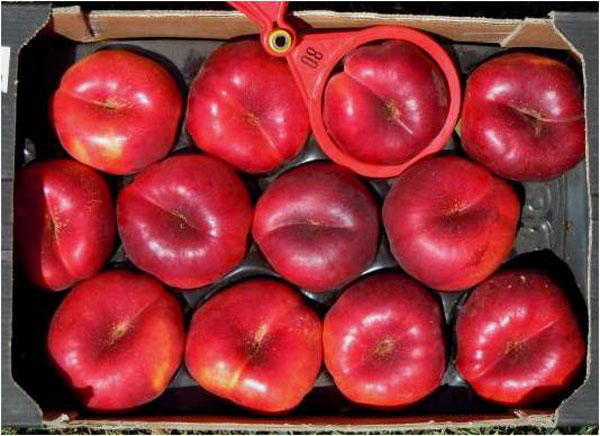
The innovation varietal in platerina and Paraguayan has shot in the two last decades, and in the actuality has of more than 80 new varieties.
In the group of the peach and flat nectarine (Paraguayan and platerina respectively), the creation varietal has been very important in the two last decades, so that in the actuality has of more than 80 new varieties. With a production that in Spain has surpassed the 110.000 tonnes, during this year, and a surface estimated next to the 6.000 hectares, this type of flat fruit has turned into a paradigm by the success obtained so much in the national markets (where already knew does decades) as in the ones of export (Germany, United Kingdom, Russia, etc.). Besides, his profitability has been clearly upper to the one of the peach and the nectarine, even in years of economic crisis, like 2005 or 2011, although it is true that the prices show a declining tendency from six years ago, by what the future of this flat fruit presents diverse interrogantes. His success attributes to the fact that, for the first time, is possible to associate a form of fruit (flat) to a typology or flavour (sweet) and this has given in the practical whole of the varieties commercialised. The innovation varietal proceeds mainly of three obtentores: C.R.To. Of Rome and Forlí (Italy), To.S.F. (France) and INRA-QN (IPS-France) to which have added recently others of Spain like Provedo or P.S.B. In the case of the flat peach, UFO-4 and Sweet Cap keep on being the reference, to which have incorporated numerous new varieties that complete the range varietal and that in a lot of cases contribute a substantial improvement of the colour of the fruit and of the closing of the cavity calicina. In order of maduration, quotes to Sweet Ring, Carioca, Platifirst, Flatbella, Galaxy, Pink Ring, Flatbeauty, Platibelle, Platifun, ASF 07-96, Sweet Cap, ASF 07-97, Flatprincess, ASF 04-93, Flatqueen, ASF 07-98, Flatmoon and ASF 07-99. Regarding the platerina, the most stood out varieties in order of maduration are: Platinet-1, ASF 07-74, Mesembrine, ASF 07-78, Subirana, ASF 08-70, Platimoon and ASF 06-88. In this group, the improvement has been important and, nowadays, has of varieties with a good productive behaviour and calibrate similar to the ones of flat peach in periods of recolección similar.
Production in Spain of more than 110.000 tonnes, and a surface estimated next to the 6.000 hectares, this type of flat fruit has attained a big success although the prices show a declining tendency from six years ago
